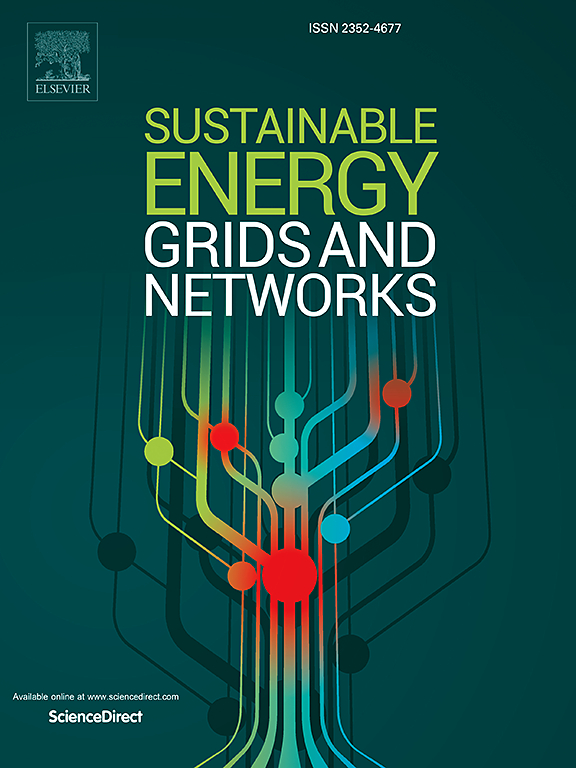通过优化网络重构恢复相互依赖的多层异质网络-物理-社会网络的结构可控性
IF 5.6
2区 工程技术
Q2 ENERGY & FUELS
引用次数: 0
摘要
本文解决了在受网络攻击损害的网络-物理-社会系统(CPSS)中恢复结构可控性的关键挑战。与现有研究关注同质网络或忽视层间耦合和层内拓扑的作用不同,这项工作引入了一种新的方法来增强相互依赖的多层异质CPSS的网络弹性。我们建立了实现攻击后结构可控性的新充分必要条件,并提出了一种以最小干预恢复可控性的网络重构算法。该算法确定了重新配置该网络所需的最小边集,确保了在多项式时间内的结构可控性。我们的方法通过各种CPSS的仿真得到验证,包括IEEE 14总线和IEEE 118总线电源网络,以及遭受各种攻击策略的无标度、聚类无标度、小世界和随机网络。此外,将该方法应用于现实世界的大规模数据集,证明了该方法的可扩展性和实用性。结果表明,在层内拓扑中,无标度网络极易受到结构不可控性的影响。此外,与网格和点对点(P2P)耦合配置相比,稀疏层间耦合显着降低了CPSS的弹性。值得注意的是,与随机攻击相比,基于中间性的目标攻击需要大约53 %的边缘添加来恢复可控性。本文章由计算机程序翻译,如有差异,请以英文原文为准。
Restoring structural controllability of interdependent multi-layered heterogenous cyber-physical-social networks via optimal network reconfiguration
This paper addresses the critical challenge of restoring structural controllability in cyber-physical-social systems (CPSS) compromised by cyber-attacks. Unlike existing studies that focus on homogenous networks or neglect the role of interlayer couplings and intralayer topologies, this work introduces a novel approach to enhance cyber resilience in interdependent multi-layered heterogenous CPSS. We establish new necessary and sufficient conditions for achieving post-attack structural controllability and propose an optimal network reconfiguration algorithm that restores controllability with minimal intervention. This novel algorithm identifies the minimum set of edges required to reconfigure this network, ensuring structural controllability in a polynomial time. Our approach is validated through simulations on various CPSS, including IEEE 14-bus and IEEE 118-bus power networks, as well as scale-free, clustered scale-free, small-world, and random networks subjected to various attack strategies. Additionally, the approach is applied to real-world large-scale datasets, demonstrating its scalability and practical applicability. The results reveal that, among intralayer topologies, scale-free networks are highly vulnerable to structural uncontrollability. Furthermore, sparse interlayer coupling significantly reduces the resilience of the CPSS compared to mesh and peer-to-peer (P2P) coupling configurations. Notably, targeted attacks based on betweenness require about 53 % more edge additions to restore controllability compared to random attacks.
求助全文
通过发布文献求助,成功后即可免费获取论文全文。
去求助
来源期刊

Sustainable Energy Grids & Networks
Energy-Energy Engineering and Power Technology
CiteScore
7.90
自引率
13.00%
发文量
206
审稿时长
49 days
期刊介绍:
Sustainable Energy, Grids and Networks (SEGAN)is an international peer-reviewed publication for theoretical and applied research dealing with energy, information grids and power networks, including smart grids from super to micro grid scales. SEGAN welcomes papers describing fundamental advances in mathematical, statistical or computational methods with application to power and energy systems, as well as papers on applications, computation and modeling in the areas of electrical and energy systems with coupled information and communication technologies.
 求助内容:
求助内容: 应助结果提醒方式:
应助结果提醒方式:


